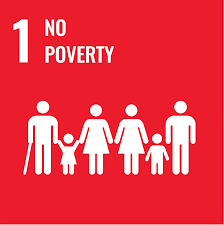. No Poverty: The Path to Economic Equality
Poverty remains one of the most persistent global issues, affecting billions of people worldwide. The United Nations' first Sustainable Development Goal (SDG 1) aims to eradicate poverty in all its forms everywhere by 2030. Despite progress over the years, nearly 10% of the global population still lives in extreme poverty, surviving on less than $1.90 a day. This goal seeks to tackle this issue by promoting policies that enhance equal access to resources, providing economic opportunities, and addressing inequality.
Achieving SDG 1 involves reducing income inequalities, ensuring social protection for vulnerable populations, and promoting inclusive economic growth. It requires the collaboration of governments, international organizations, businesses, and local communities. Financial inclusion and empowering marginalized groups such as women, children, and indigenous communities are crucial to eliminating poverty.
One of the critical areas to focus on is ensuring access to quality education and healthcare, as these are essential drivers for breaking the poverty cycle. Moreover, enhancing job opportunities and social security can provide individuals with the tools they need to improve their standard of living.
SDG 1 underscores that eradicating poverty is not just about providing financial resources, but also about addressing the structural inequalities that keep people trapped in cycles of deprivation. By targeting the root causes of poverty and implementing integrated solutions, it is possible to build a more equitable and sustainable world for everyone.

